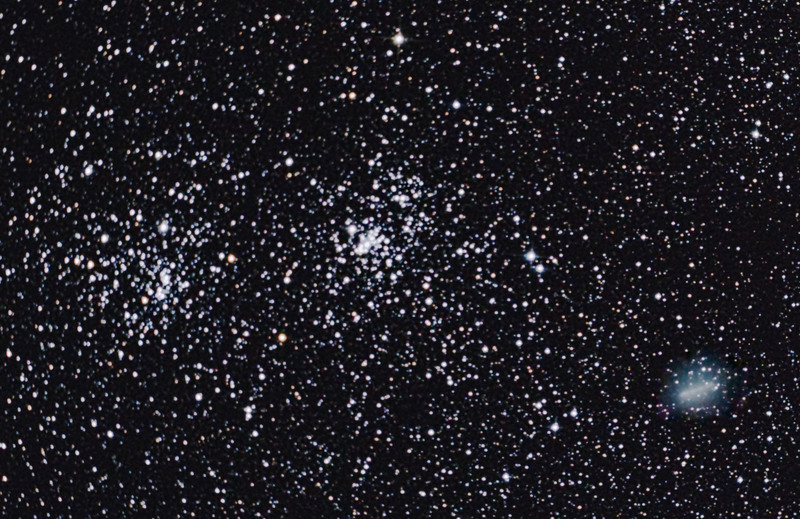Double Cluster and Comet Hartley
Description
This is image of Comet Hartley visiting the Double Cluster in Perseus. The Double Cluster (also known as Caldwell 14) is the common name for the naked-eye open clusters NGC 869 and NGC 884 , which are close together in the constellation Perseus. NGC 869 and NGC 884 both lie at a distance of 7500 light years. NGC 869 has a mass of 3700 solar masses and NGC 884 weighs in at 2800 solar masses; however, later research has shown both clusters are surrounded with a very extensive halo of stars, with a total mass for the complex of at least 20,000 solar masses.Based on their individual stars, the clusters are relatively young, both 12.8 million years old. Comet Hartley 2, designated as 103P/Hartley by the Minor Planet Center, is a small periodic comet with an orbital period of 6.46 years. It was discovered by Malcolm Hartley in 1986 at the Schmidt Telescope Unit, Siding Spring Observatory, Australia. Its diameter is estimated to be 1.2 to 1.6 kilometres (0.75 to 0.99 mi). Hartley 2 was the target of a flyby of the Deep Impact spacecraft, as part of the EPOXI mission, on 4 November 2010, which was able to approach within 700 kilometers (430 mi) of Hartley 2 as part of its extended mission. As of November 2010 Hartley 2 is the smallest comet which has been visited. It is the fifth comet visited by spacecraft, and the second comet visited by the Deep Impact spacecraft, which first visited comet Tempel 1 on 4 July 2005.
Equipment and processing
Telescope: 5 inch F5 reflector
Mount: Meade LXD55
Camera: Canon T1i
Filters: None
Guiding: None
Processing: Photoshop, DSS, Fitswork
Capture software: Intervalometer
Exposures: 58x30 ISO6400 RGB
Location: Hatteras,NC
